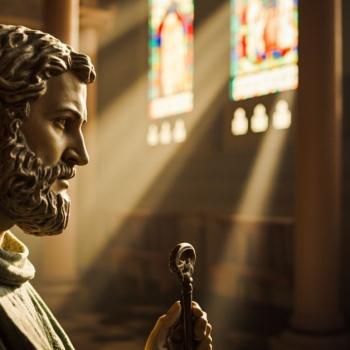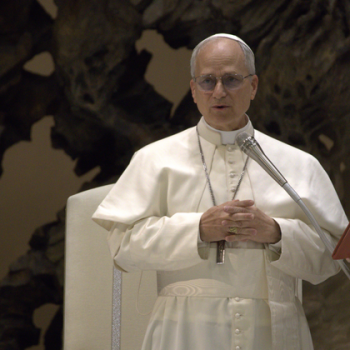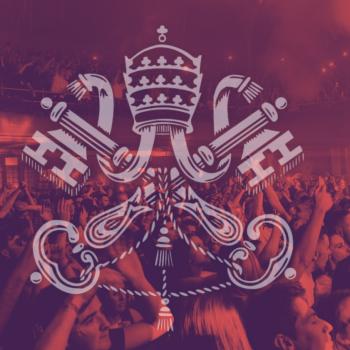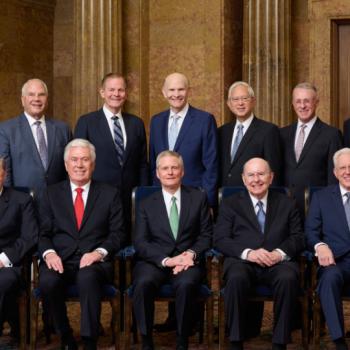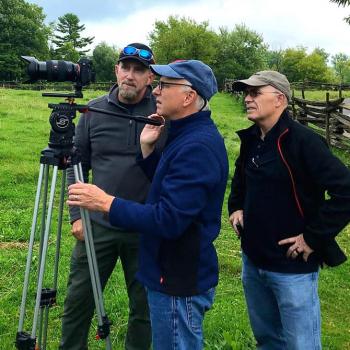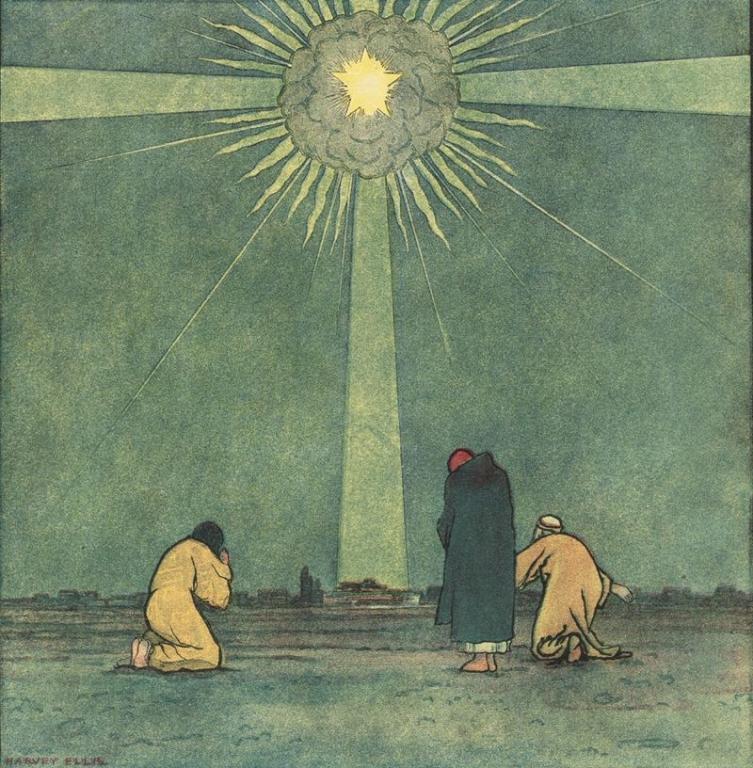
(Wikimedia Commons public domain)
I’m very happy to welcome a
New Vice President for The Interpreter Foundation
You can see photos and bios of our Board of Trustees, as currently constituted, here:
***
We published another article today in Interpreter: A Journal of Latter-day Saint Faith and Scholarship.
This one, by Noel B. Reynolds (who also serves on Interpreter Foundation’s Board of Trustees), is entitled
“Chiastic Structuring of Large Texts: Second Nephi as a Case Study”
Abstract: In this important paper, Noel Reynolds extends his 1980 argument for the chiastic structure of 1 Nephi to demonstrate that 2 Nephi can be seen as a matching structure with a similar nature. Taken together, these findings demonstrate that chiasmus is not a phenomenon that confines itself to the details of words and phrases at the level of scriptural verses but can extend to much larger units of meaning, allowing the rhetorical beauty and emphasis of their overall messages to shine more brilliantly when they are considered as purposefully crafted wholes.
[Editor’s Note: Part of our book chapter reprint series, this article is reprinted here as a service to the LDS community. Original pagination and page numbers have necessarily changed, otherwise the reprint has the same content as the original.
See Noel B. Reynolds, “Chiastic Structuring of Large Texts: Second Nephi as a Case Study,” in “To Seek the Law of the Lord”: Essays in Honor of John W. Welch, ed. Paul Y. Hoskisson and Daniel C. Peterson (Orem, UT: The Interpreter Foundation, 2017), 333–50. Further information at https://interpreterfoundation.org/books/to-seek-the-law-of-the-lord-essays-in-honor-of-john-w-welch-2/.]
***
You might find this blog entry, written by Jeff Lindsay (yet another member of the Interpreter Foundation’s Board of Trustees), an interesting read:
***
Here are some thoughts that I enjoyed from Alister E. McGrath, Mere Apologetics: How to Help Seekers and Skeptics Find Faith (Grand Rapids, MI: BakerBooks, 2012):
Apologetics aims to convert believers into thinkers, and thinkers into believers. (11)
To use an analogy found in the writings of Martin Luther, faith is like getting into a boat and crossing the sea to an island. Apologetics can help establish that it is reasonable to believe that there is a boat, that it is likely to be safe to travel in, and that there is an island just beyond the horizon. But you still need to get in the boat and travel to the island. (24)
As Blaise Pascal once quipped, we must “make good people wish that [the Christian faith] were true, and then show that it is.” (23, citing Blaise Pascal, Pensées [Minneola, NY: Dover Publications, 2003], 52)
Good apologetics, though, isn’t only about the content of faith. It’s about how that content is expressed, and the expression will vary from place to place, culture to culture, over time, according to such variables as the character and educational level and age and maturity and sophistication or lack of sophistication of its audience:
Apologetics is to be seen not as a defensive and hostile reaction against the world, but as a welcome opportunity to exhibit, celebrate, and display the treasure chest of the Christian faith. It encourages believers to appreciate their faith, and to explain and commend it to those outside the church. It aims to set out the intellectual, moral, imaginative, and relational richness of the Christian faith — particularly to reassure believers and help them develop their faith, but primarily to enable those outside the community of faith to realize the compelling vision that lies at the heart of the Christian gospel. (11)
Down the ages, like runners in a great relay race of history, others have passed this Good News from one generation to another. And now the baton has been handed to us. It’s our turn. We have been entrusted with passing on the Good News to those around and beyond us. (13)
Where apologetics aims to secure consent, evangelism aims to secure commitment. (22)
The dividing line between apologetics and evangelism is fuzzy; making a distinction between them, however, is helpful. Apologetics is conversational, where evangelism is invitational. (22)
The task of apologetics is . . . to prepare the way for the coming of Christ, just as someone might clear rocks and other roadblocks from a pathway. (22)
Dr. McGrath quotes the great Catholic apologist G. K. Chesterton (1874-1936):
The object of opening the mind, as of opening the mouth, is to shut it again on something solid. (11, citing G. K. Chesterton, Autobiography [New York: Sheed & Ward, 1936], 229)
Apologetics celebrates and proclaims the intellectual solidity, the imaginative richness, and the spiritual depth of the gospel in ways that can connect with our culture. (11)
Apologetics always takes place within a specific cultural context. Christian missionaries to China and India soon discovered that the apologetic methods that seemed to work well in western Europe did not seem to be effective in Asia. It was necessary to develop new approaches that resonated with the cultural mood and patterns of thought characteristic of these regions. An apologetic approach that was very productive in one context might prove much less effective, and perhaps even counterproductive, in a different cultural environment. (27)
[T]he apologist sets out to allow the truth and relevance of the gospel to be appreciated by the audience. (19)
[A]pologetics is concerned with three themes . . . :
- Identifying and responding to objections or difficulties concerning the gospel, and helping to overcome these barriers to faith.
- Communicating the excitement and wonder of the Christian faith, so that its potential to transform the human situation can be appreciated.
- Translating the core ideas of the Christian faith into language that makes sense to outsiders. (21)
As C. S. Lewis wisely remarked: “Our business is to present that which is timeless (the same yesterday, today, and tomorrow — Heb. 13:8) in the particular language of our own age.” Our privilege and responsibility is to express the timeless truths of the gospel using language and imagery adapted to our audiences. The apologist is thus someone who translates the realities of faith into the cultural vernacular. (37)
Food for thought.




